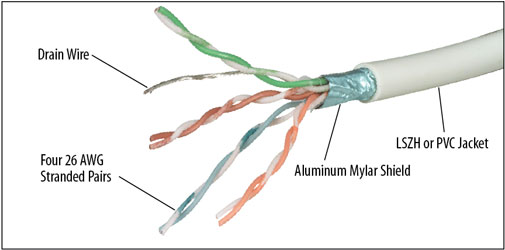
With high bandwidth applications on the rise and network systems venturing into new areas such as factory environments, the need for shielded Cat 6 cable has also increased. In these new areas of installation, the environment in which the network cable is run has a large amount of EMI (Electro-Magnetic Interference). Although Cat 6 cables have improved cable twist to handle gigabit Ethernet and reject noise, this by itself is not enough for environments that have high EMI. Using a shielded Cat 6 cable will help in these high EMI installations. L-com has stepped up to this demand and created a line of high performance Cat 6 patch cables that feature a 100% foil shield and the option of either a PVC jacket or Low Smoke Zero Halogen (LSZH) jacket.
These high performance cables ensure the data within the cable will be protected from EMI, resulting in higher speeds and better data transmission.

Grounding Necessities for Shielded Cat 6 cables
Shielding helps protect the data from any sort of electromagnetic interference from an outside source. This could alter or weaken the signal traveling through the copper in the cable. The shields of the two connectors in our shielded Cat 6 cables are electrically tied together via the drain wire. However, they will only become grounded if the jack they are placed in has its shielding tied to ground. For that reason, if you are setting up a network with Category 6 shielded cables, you should use Cat 6 shielded couplers and jacks.